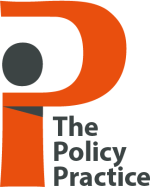Second-Best Institutions – Rodrik (2008)
Echoing North (2003), Rodrik maintains that desirable, market-supporting institutions provide security of property rights, enforce contracts, and stimulate entrepreneurship, among other functions – but each of these ends can be achieved in a large number of different ways. He observes that many aid agencies and other relevant actors continue to pursue a “best practice” model when pursing institutional reforms. Rodrik argues in favour of a “second-best mindset,” adding that “a focus on best-practice institutions not only creates blind spots, leading us to overlook reforms that might achieve the desired ends at lower costs, it can also backfire.”
He illustrates his point with four reform examples relating to courts and contract enforcement, entry regulation and entrepreneurship, import liberalization, and credible monetary policy. Through these examples, he explores how a given reform effort may interact in unintended and potentially harmful ways with existing informal institutions or else may have a negative impact on another parameter affecting growth.
From this discussion, Rodrik clarifies what it means for reformers to navigate a “second best” environment. They must better understand what adverse interactions a given reform might have, whether or not it is politically feasible, and how reform objectives will evolve over time with a changing environment.
